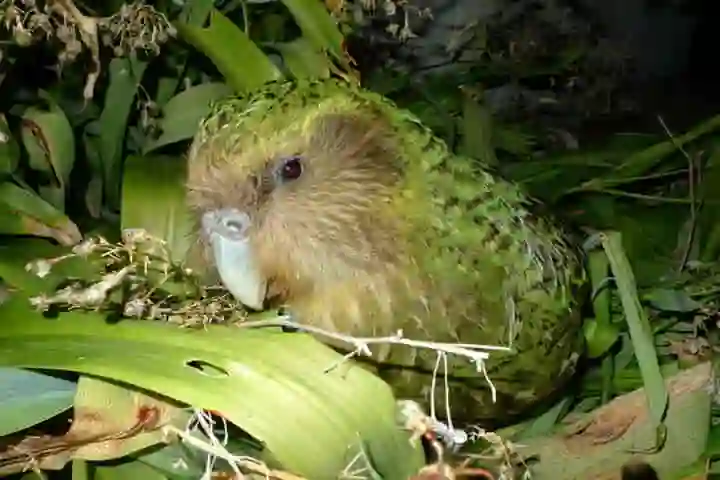As a species, kakapos with its speckled lime-green feathers look endearing but alas they are endangered. The flightless and nocturnal bird, whose scientific name is Strigops habroptilus and also goes by the name owl parrot, is found in New Zealand and figures in the International Union for Conservation of Nature Red List, with only 201 of these birds remaining currently.
Considering its status, kakapos are a subject of special interest for the researchers and scientists. A recent study has found that even though most of the present population comes from a small gene pool, and that there has been inbreeding in them for 10,000 years, the kakapos have very less harmful mutations than what was anticipated.
According to an article in smithsonianmag.com, BBC Science Focus states that these mutations instead of being collected, may have been lost over a period of time.
The findings of this study suggests that bereft of genetic diversity, small populations of animals can survive in isolation for several generations even if there is inbreeding.
The study, providing insights to experts, scientists and researchers, as to how kakapo’s genetic tools helped it to conserve it, was published in Cell Genomics.
Also read: Cannibalism In Australian Cane Toads Triggers Evolutionary Changes
The fate of this bird was deeply impacted by its interaction with humankind. The birds confined to the island started dwindling when 700 years ago, Maori arrived in New Zealand. On tasting their meat, Maori found kakapos delightful and what is more they were easy to catch because of their wobbly strides.
As per New Scientist, the strength of these creatures continued to go down further with the arrival of the Europeans who brought rats, cats and short-tailed weasels. And the net result was that by 1995, a solitary bird – named Richard Henry – was left on the mainland, while on Stewart Island there were 50 left.
This study to comprehend the genome of kakapos was done by Love Dalén, a geneticist at the Centre for Paleogenetics in Sweden, and his team of scientists in New Zealand and Sweden. The write-up in BBC Science states that they made a comparison between the genes of 35 live kākāpōs from Stewart Island and the 14 museum specimens from the extinct mainland population. Apart from these, Richard Henry, the last kakapo of the mainland, who died in 2010 at the age of 80, was also a part of the study.
The New Scientist mentions that the comparison of the genomes yielded that the living Stewart Island birds had half as many mutations as the deceased New Zealand mainland birds.
This flummoxed the scientists since the mainland population which was much bigger at one point of time and therefore had more genetic diversity was expected to have fewer mutations as compared to Stewart Island birds, who were isolated, pointed out the Economist report.
New Scientist sharing the data specified that while the Stewart Island kākāpōs had, on average, 18 genetic mutations per bird the mainland parrots had 34 mutations.
This disparity the researchers felt was due to a near-extinction event 10,000 years ago in which from the mainland, the Stewart Island split. This split forced the Stewart birds to become more resistant to mutations to keep their population going.
Also read: Study of rhinoceros genetics will help boost their dwindling population
The scientists feel that kakapos underwent what is called purging. This process takes place when there is much inbreeding in the species that harmful mutations collect to reach such a limit that birds that have two mutated copies of gene have a lesser number of offspring. This leads to the removal from the gene pool of the harmful mutations.
Sharing details with New Scientist, Dalen said: “The Stewart Island kakapo have been suffering from inbreeding for 10,000 years. Consequently, when the population size decreased even further in the last centuries, they were likely less affected than they would have been without going through this earlier purging of harmful mutations.”
The research team wants to study further in this area by scrutinising other genomes of inbred animals to confirm if the result of their studies was confined to kakapos or was it happening in other species too.




















